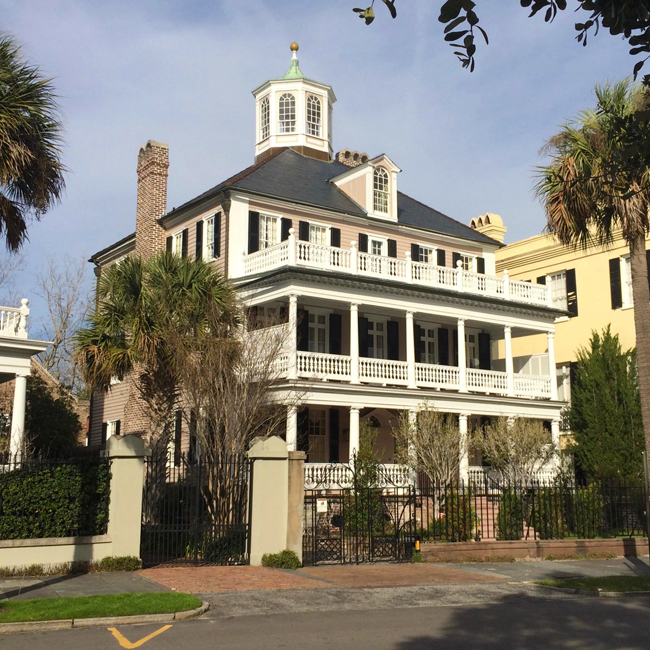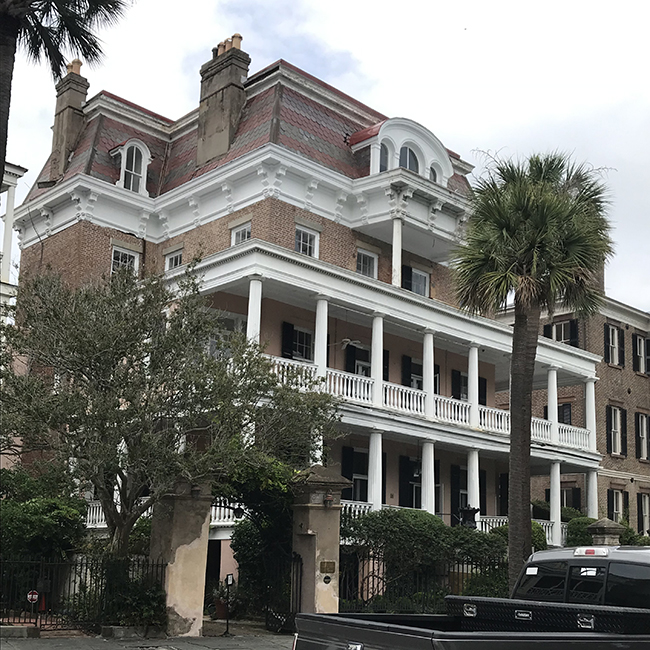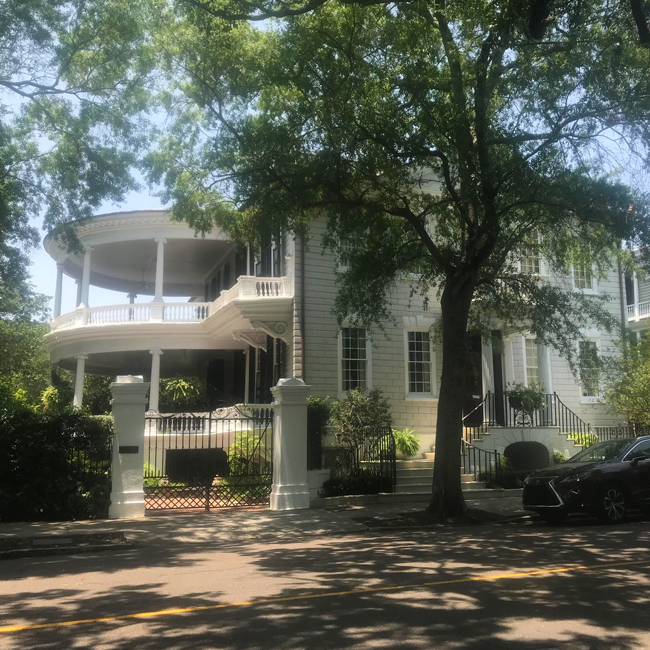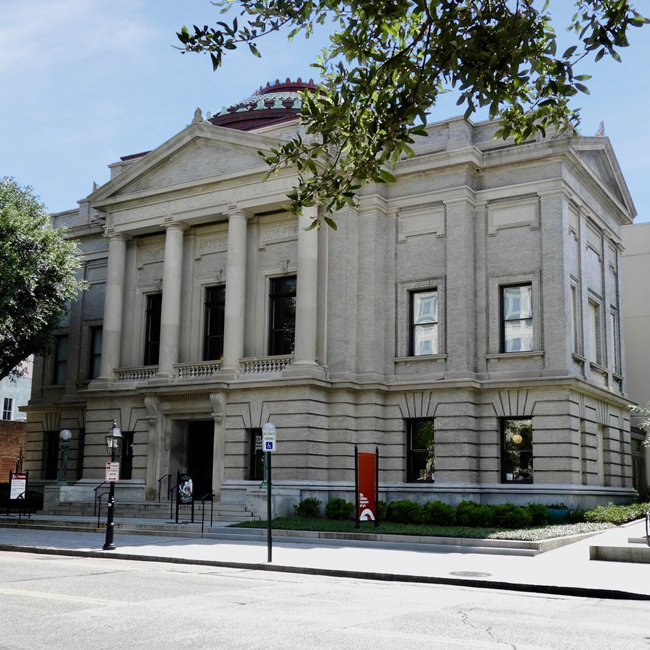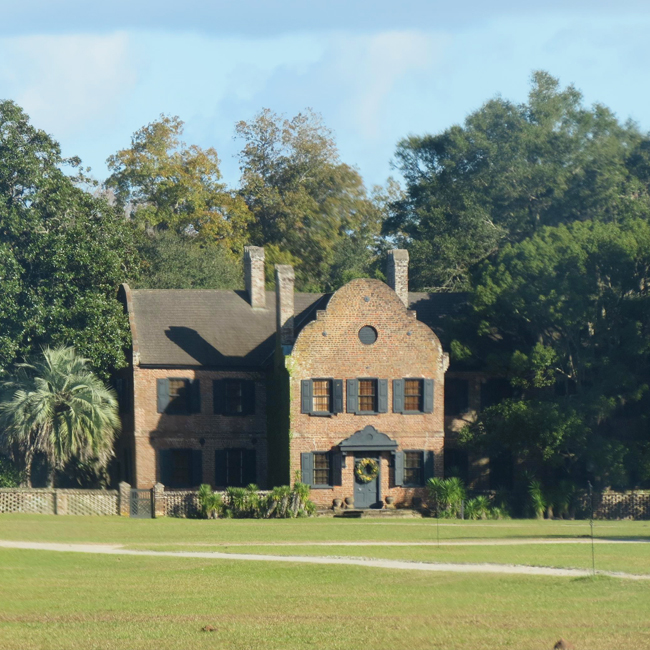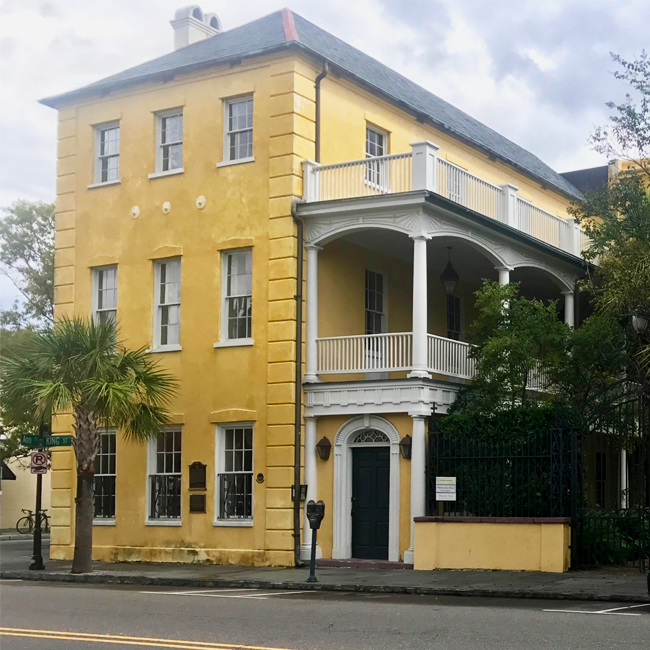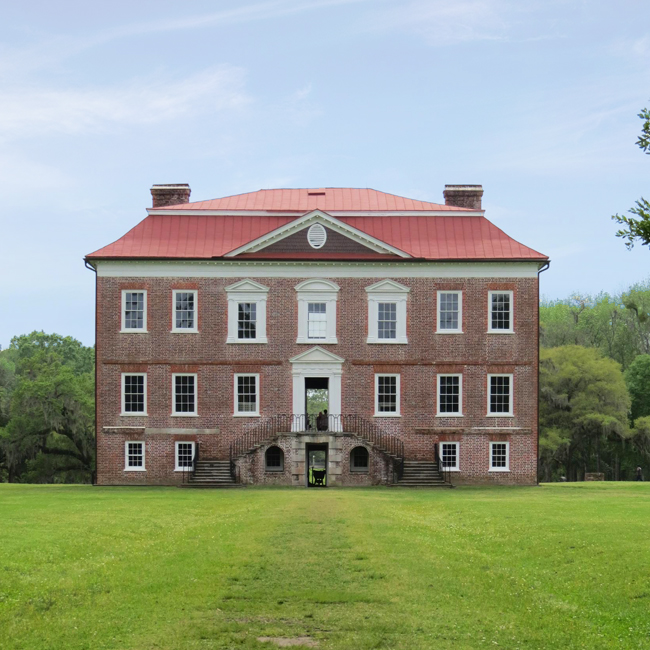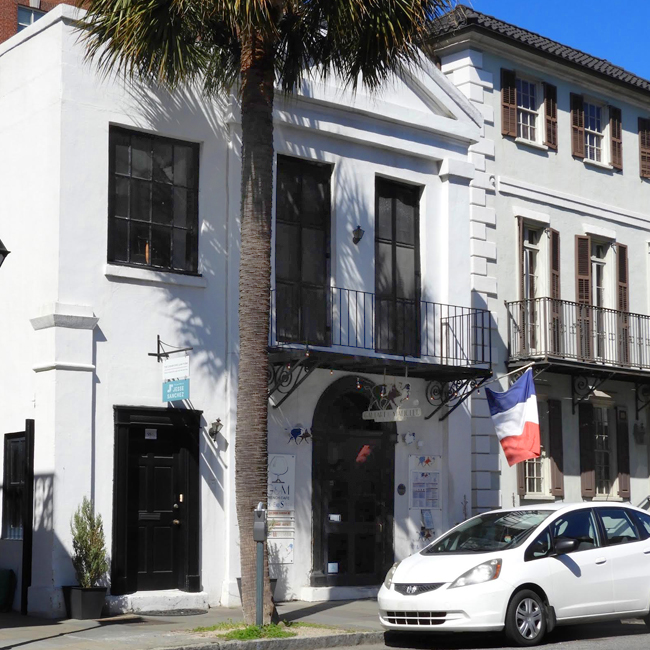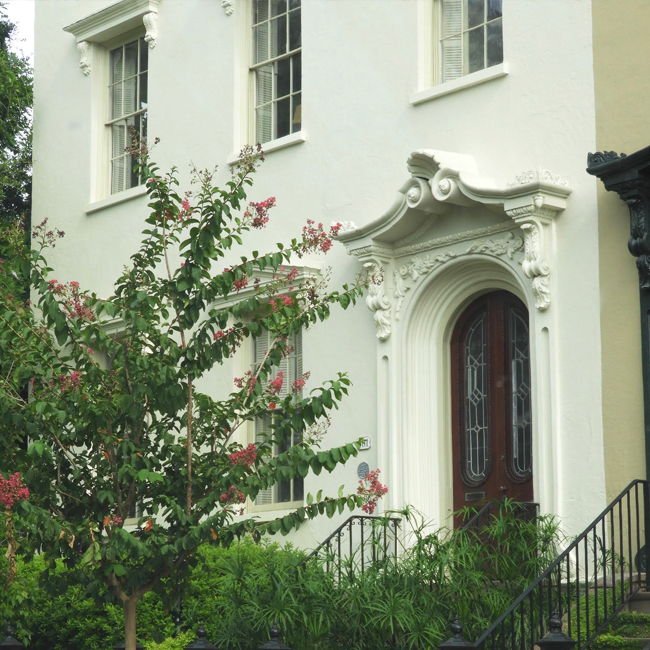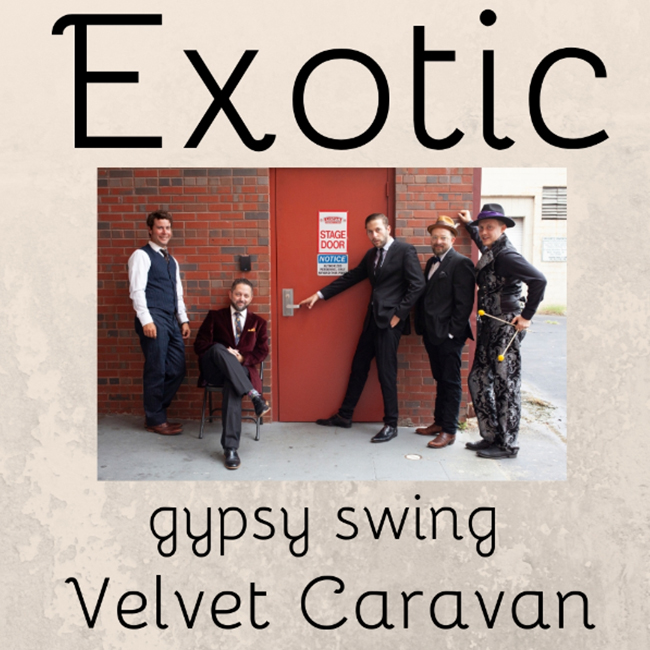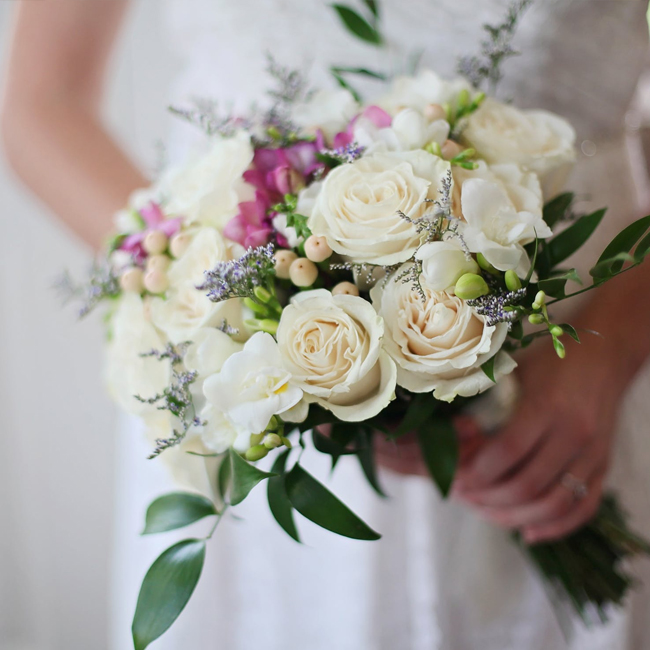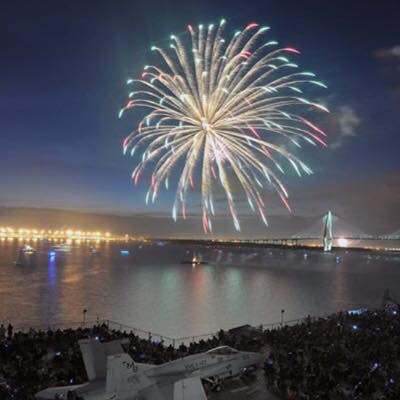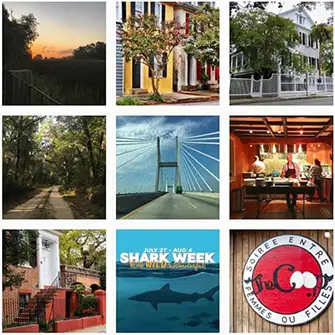This week we visit 32 South Battery, just a few doors down from last week’s post. Built around 1782, 32 South Battery originally enjoyed a front row view of the Ashley River and Charleston Harbor across what is now White Point Gardens, the first public park in Charleston. The view is still good, and the mansion commanded a huge price when it was sold in 2015: $7.72 million.
32 South Battery was built for Colonel John Ashe, a wealthy gentleman who made his fortune in shipping; appropriately, the framing of the house used wooden pegs similar to those in shipbuilding. The construction is attributed to Mr. Miller of the Miller and Fullerton partnership. Miller’s partner was Scottish master builder John Fullerton whose name is associated with several grand houses in Charleston during this era.

